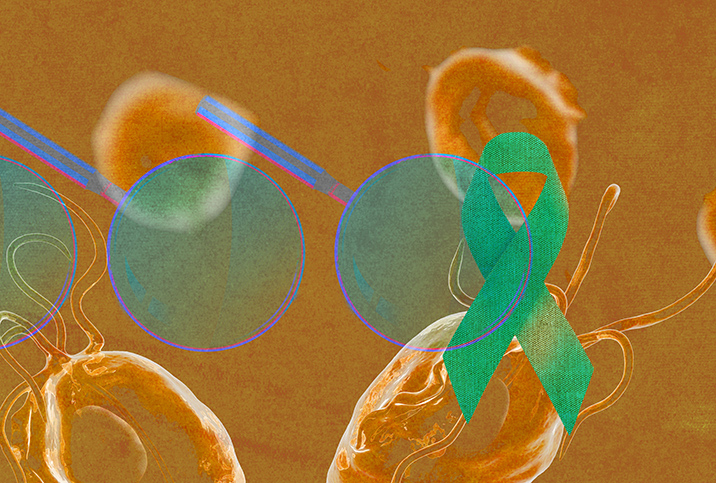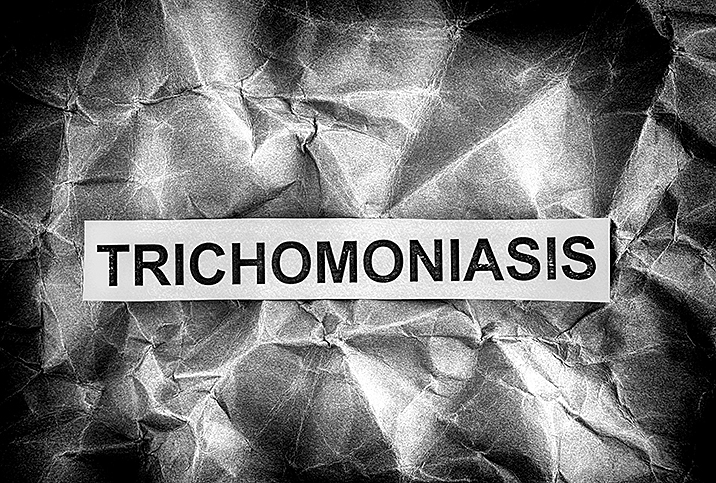What is Trichomoniasis and How Do You Know If You've Been Infected?

Trichomoniasis, a sexually transmitted infection, is caused by the single-celled parasite Trichomonas vaginalis. It is often referred to as 'trich' for short.
As it can be present without symptoms, it is one of the more common—although easily treatable—sexually transmitted infections (STIs). Because a parasite causes trichomoniasis, it is considered to be an infection and not a sexually transmitted disease (STD).
The parasite is a member of the Trichomonads family and one of four parasites common for many vertebrates and invertebrates. These include the following parasites:
- Trichomonas vaginalis (the parasite that causes trichomoniasis)
- Dientamoeba fragilis
- Pentatrichomonas hominis
- Trichomonas tenax
Unlike the other three Trichomanad parasites, the parasite called Trichomonas vaginalis only affects humans and cannot survive for long outside the human body.
Facts, stats and studies
Trichomonas vaginalis was first described by French bacteriologist and doctor Alfred François Donné in 1836 who discovered and made the first illustrations of the parasite after examining the vaginal discharge of an infected patient.
Donné was also the inventor of the photoelectric microscope used to discover the microscopic appearances of leukemia.
It was not until 80 years later in 1916 that the protozoan parasite Trichomonas vaginalis was accepted as the cause of trichomoniasis.
This is a common STI. Roughly 3.7 million people in the United States are infected with trichomoniasis, shared a 2017 report. Almost 55 percent of people with trich are women aged 14-49, according to the Office of Women's Health.
Infections were highest in African American women (9.6 percent) and 1.4% of Hispanic women (1.4 percent), compared to 0.8 percent of non-Hispanic white women, according to the Centers for Disease Control and Prevention (CDC).
The CDC noted a strong correlation between those who had been infected with chlamydia in the previous year and those diagnosed with a trichomoniasis infection.
Although trichomoniasis is the most curable non-viral STI in the United States, an estimated 70 percent of those with the infection show no signs or symptoms. With no physical trigger to seek medical attention, stopping the infection from spreading is difficult.
There are about 276 million new cases of trichomoniasis annually, according to a 2016 report. At any one time, there are believed to be 187 million active infections around the globe.
What causes trichomoniasis?
The trichomoniasis parasite most often affects the vagina and urethra in women and the urethra in men. The urethra is the tube that transports urine from the bladder. In men, it can also infect the head of the penis and the prostate gland, which assists with semen production.
It is possible, but not typical, for the trichomoniasis parasite to infect other body parts, such as the hands, mouth and anus.
To diagnose the parasite, a vaginal or penile swab or urine test can be analyzed by medical professionals to detect the presence of Trichomonas vaginalis in the lower genital tract.
How is trichomoniasis spread?
The parasite is usually spread by having sex with an infected sex partner, more specifically by the exchange of fluids during sex. Wearing a condom during sex is an easy method of prevention.
"Women can get trich from sexual partners with infected vaginas or penises. It is also possible to get infected from anal sex but this is not usual," said Nancy Cicak, nurse practitioner and director of clinical services at the Family Health Council of Central PA, based in Carlisle, Pennsylvania.
It is unusual to spread trich via oral sex.
The parasite can be present on sex toys that have been used so it's important to either clean sex toys or cover them with a condom before using them again.
"The symptoms can include vaginal pain, abnormal vaginal discharge, vaginal itching, urethral discomfort, penile discharge and pain during sex," said Cindy Cedillo-Ruiz, M.D., board-certified family medicine physician, based in Houston, Texas.
"There are people who may have trichomoniasis but experience none of the listed symptoms. So the range can be from silent carrier to full-blown severe inflammation," Cedillo-Ruiz said.
It's not possible to build up resistance to the parasite and that means reinfection is possible. That's why it is so important to protect yourself as well as current and future partners with safe sex practices.
As previously noted, a latex condom can be an effective protection as they have been proven to be an "impermeable barrier" against the particle size of the secretions that carry the trichomoniasis parasite, the CDC said.
However, for a latex condom to provide protection against trich and other sexually transmitted infections or disease, you have to use a condom the right way. Here is a quick update on how to correctly use a condom to protect you and your partner against STIs:
- Make sure the condom is not out of date and not damaged before use.
- Put the condom on before you have sex, not during.
- Leave a small reservoir at the top of the condom for the semen to collect.
- Make sure the condom is rolled to the end of the penis.
- Withdraw fully from your partner while holding on to the bottom of the condom before removing it.
- Check the condom has no rips or tears.
- Dispose of the condom by wrapping it in tissue and throwing it in the waste bin to ensure nobody can accidentally touch it.
Of course, no contraception provides 100 percent protection against STDs and STIs, so it's essential to plan for regular sexual health screenings.
"It can take up to two weeks for trichomoniasis to show up on tests after infection via sexual contact," said Helen Burkitt, DFSRH, senior sexual health and contraception nurse at SH:24, based in London, England. "People should be aware that if they're sexually active, they need to test, even if they don't have symptoms."
Sexually transmitted infections like trichomoniasis and STDs like chlamydia, genital herpes, gonorrhea, syphilis and hepatitis B can all present with no symptoms. Scheduling regular testing annually can help you identify something you may not know you have.
If you're sexually active, national guidelines suggest getting an STD or STI test every three to six months. An early diagnosis can lead to better outcomes.
The bottom line
Trichomoniasis is unlikely to go away on its own without treatment. Since not everyone will experience the symptoms of trichomoniasis, it's important to get tested. Trich can sometimes create other issues if left undiagnosed.
If you experience discharge from the penis, itching or irritation of the vulva or vagina, see your health care provider for laboratory testing.
"Ignoring trichomoniasis can lead to pelvic inflammatory disease (PID) which can cause scarring and fertility issues. There's also an increased risk of becoming infected with a virus like HIV," said Cedillo-Ruiz. "It can also induce preterm labor and result in babies having lower birth weights."
The good news is that it's easy to diagnose trichomoniasis with nothing more than a swab or urine test and a short course of antibiotics can be prescribed to treat trichomoniasis. For most people, that will be an antibiotic like metronidazole, taken twice a day for five to seven days.
You may be able to get a single, larger dose. Retesting two weeks to three months after treatment will make sure the infection is gone and that you haven't been reinfected.


















